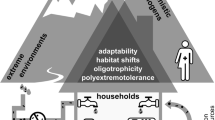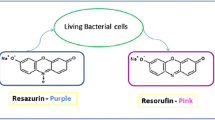An impedance technology or conductometric method in microbiological control is an indirect culture method for the determination of microorganisms using measurements of the impedance, i.e., electrical resistance to an alternating current in a growth medium as its chemical composition is transformed by the growth and metabolic activity of microorganisms. Traditional pharmacopoeial methods (double-layer agar method, surface inoculation, submerged cultivation) are used in practice for analysis. The conductometric method and the ATP-luminescent method for determining the total number of microorganisms can be used as alternative methods that significantly reduce the time of analysis and the amounts of consumables. The possibility of using impedance technology (conductometry method) for the determination of the total number of aerobic microorganisms in samples of medicinal plant raw materials with high levels of microbial contamination was examined by us. The aim of the study was to determine the total number of aerobic microorganisms in 1 g (mL) of herbal medicinal raw materials by impedance conductometric and pharmacopoeial cup agar methods. The results from determining the number of aerobic microorganisms using the cup pharmacopoeial and conductometric methods agreed with a correlation coefficient of 0.964.





Similar content being viewed by others
References
E. P. Anan’eva, O. Yu. Bogdanova, S. V. Gurina, et al., Khim.-farm. Zh., 56(6), 54 – 58 (2022); Pharm. Chem. J., 56(6), 872 – 876 (2022).
State Pharmacopoeia, IVth Ed., General Pharmacopoeial Monograph “Microbiological purity. GPM. 1.2.4.0002.18.”
V. S. Sibirtsev, L. V. Krasnikova, A. G. Shleikin, et al., Nauchn.-Tekh. Vestn. Inf. Tekhnol., Mekh. Opt., 15(2), 275 – 284 (2015).
Methodical instructions MUK 4.2.1111-02 “Methods of control. Biological and microbiological factors. Use of electrical impedance method for sanitary-microbiological study of drinking water,”
V. S. Sibirtsev, I. A. Naumov, E. E. Kuprina, et al., Khim.-farm. Zh., 50(7), 51 – 55 (2016); Pharm. Chem. J., 50(7), 481 – 485 (2016).
A. N. Mashina, Yu. M. Artemkina, and V. V. Shcherbakov, Usp. Khim. Khim. Tekhnol., 7(203), 53 – 55 (2018).
V. S. Sibirtsev, Biokhimiya, 71, 111 – 120 (2006).
Author information
Authors and Affiliations
Corresponding author
Additional information
Translated from Khimiko-Farmatsevticheskii Zhurnal, Vol. 57, No. 6, pp. 59 – 64, June, 2023.
Rights and permissions
Springer Nature or its licensor (e.g. a society or other partner) holds exclusive rights to this article under a publishing agreement with the author(s) or other rightsholder(s); author self-archiving of the accepted manuscript version of this article is solely governed by the terms of such publishing agreement and applicable law.
About this article
Cite this article
Anan’eva, E.P., Bogdanova, O.Y., Gurina, S.V. et al. Application of Impedance Technology to the Determination of Microbial Contamination of Medicinal Plant Raw Materials. Pharm Chem J 57, 913–917 (2023). https://doi.org/10.1007/s11094-023-02967-1
Received:
Published:
Issue Date:
DOI: https://doi.org/10.1007/s11094-023-02967-1




